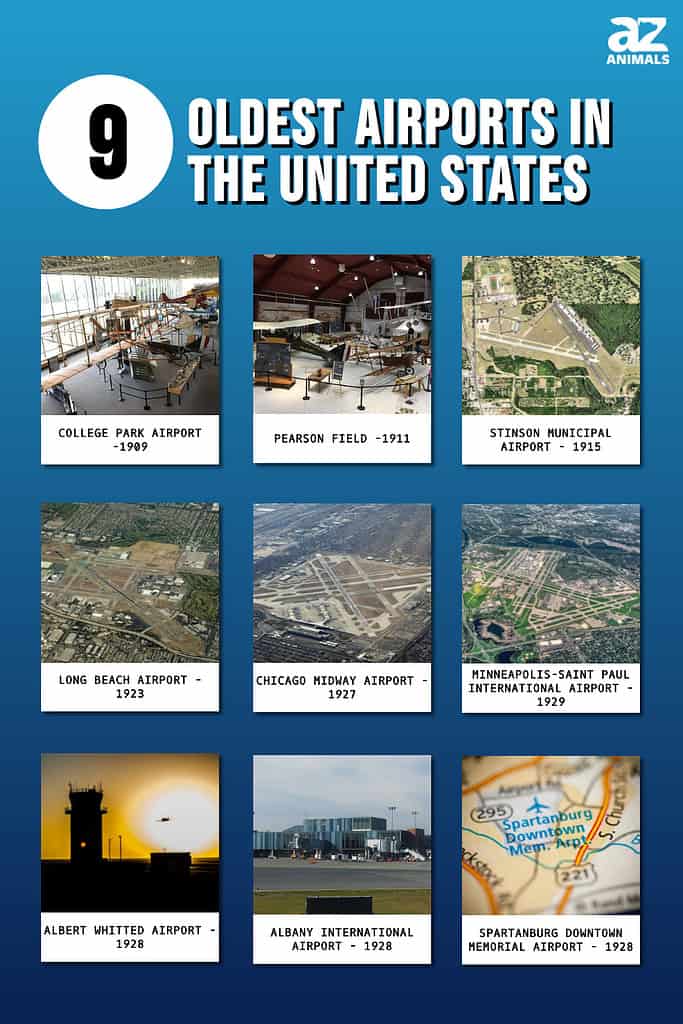
Airports are significant in aviation history, serving as gateways that connect us to the world. From the birthplace of military aviation to bustling international hubs, these airports have played a pivotal role in shaping the aviation landscape. Several airports have withstood the test of time throughout the United States, preserving the rich flight heritage. Many historical airports have continued serving the aviation industry by modernizing their facilities and adapting to new technologies. This modernization has allowed these airports to remain operational despite ever-changing requirements.
Let’s explore a list of the country’s oldest airports, sorted by age.

The oldest airport in the United States is College Park Airport.
©Preservation Maryland/ CC BY-SA 2.0 – License
College Park Airport – College Park, Maryland (Established: 1909)
The College Park Airport in College Park, MD, is the oldest in continuous operation since 1909 when Wilbur Wright was established to train military pilots. The airport also witnessed several aviation achievements. These achievements include founding the initial aviation school for the military with Wilbur Wright’s newly qualified pilots serving as tutors. In 1911, civilian planes began to operate at College Park, establishing the airport as the oldest continuously operating airport in the world.
The historical significance of this airfield is that it is currently being used as a general aviation airport. Approximately 30 aircraft are based at this airport. It mainly caters to general aviation and offers flight training. The airport has a 2,600 feet long runway that can handle various aircraft types like single and multi-engine planes, helicopters, and gliders. Also, there’s a museum at the airport showcasing exhibits, photographs, and artifacts related to the aviation history of College Park.
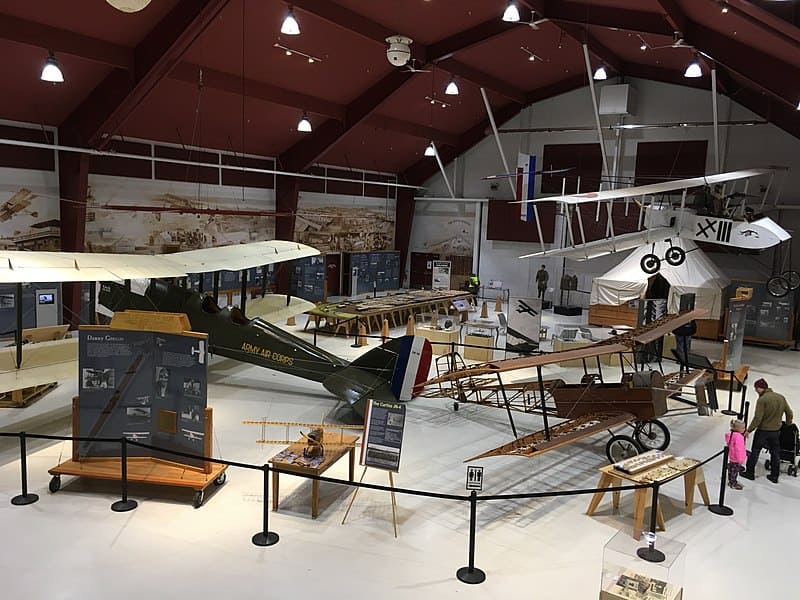
Pearson Field Airport is one of the two oldest airports in the United States.
©Ian Poellet/CC BY-SA 4.0 – License
Pearson Field – Vancouver, Washington (Established: 1911)
Pearson Field is an airport in Clark County in Washington, just one mile (2 km) southeast of Vancouver’s central business district. The city of Vancouver owns it. It’s one of the two oldest airports in the United States. Pearson Field has been operating in the Pacific Northwest region for the longest time and continues to do so. The American Institute of Aeronautics and Astronautics has recognized it as a historic aerospace site.
Pearson Field is among the oldest airports operating continuously in the United States. Air travel was first introduced to Vancouver in 1905 by Lincoln Beachey, who performed aerial stunts.
The Pearson Air Museum is near Washington State Route 14 and the Columbia River at Pearson Field. The museum is near Vancouver Barracks and Fort Vancouver, rich in history and connected to the Pacific Northwest.
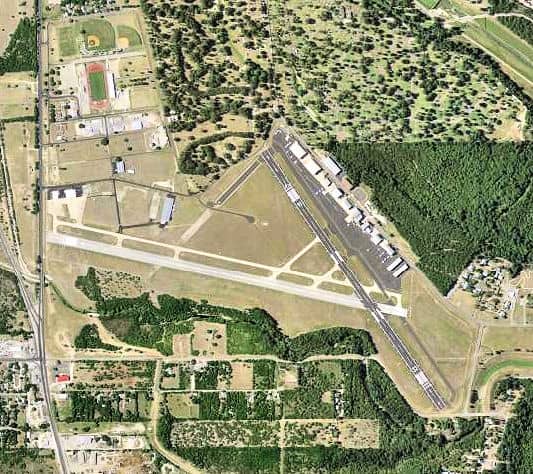
Stinson Municipal Airport has been operating continuously since October 1915.
©U.S. Geological Survey/ CC0 1.0 Public Domain – License
Stinson Municipal Airport – San Antonio, Texas (Established: 1915)
Stinson Municipal Airport is in Bexar County, TX, seven miles south of downtown San Antonio. The airport has been operating continuously since October 1915 and is the second oldest general aviation airport in the U.S. Originally, the Stinson family leased the land from the City of San Antonio after relocating from Fort Sam Houston, where they had been operating until the 1st Aero Squadron took over the airfield.
The City of San Antonio owns Stinson Municipal Airport and serves the area. It offers different services, like private corporate travel, and was classified as a reliever airport in the National Plan of Integrated Airport Systems from 2011 to 2015. The airport is located on the San Antonio Missions Parkway, within the state’s only UNESCO World Heritage site. The City of San Antonio wants suggestions for improving Stinson Municipal Airport.
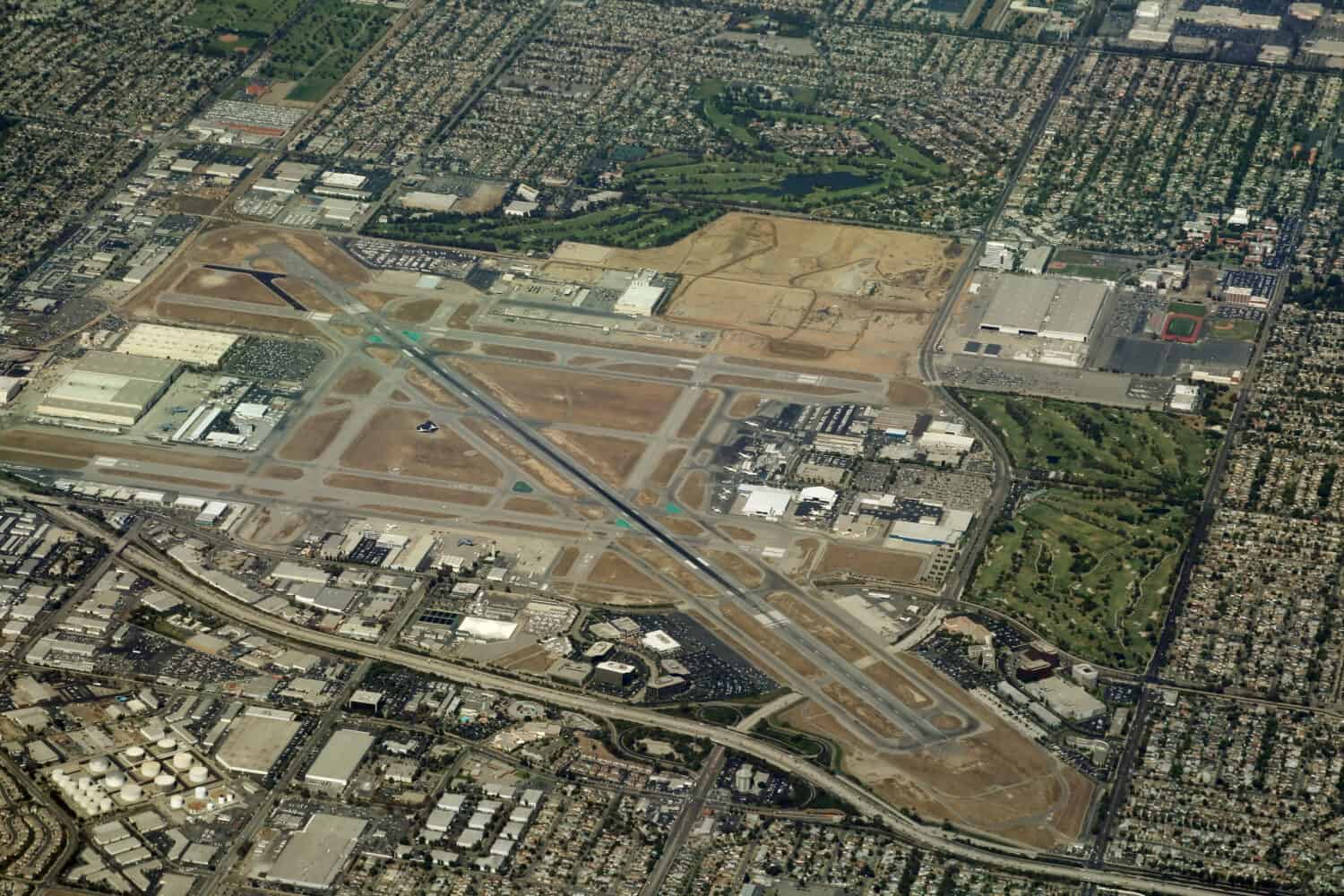
The Long Beach Airport was named after Earl Daughtery.
©Xavier MARCHANT/Shutterstock.com
Long Beach Airport – Long Beach, California (Established: 1923)
Long Beach Airport, also called Daugherty Field, is a public airport three miles northeast of downtown Long Beach in Los Angeles County, CA. It was named after Earl Daugherty, a renowned local aviator. The City of Long Beach owns the airport and caters to the needs of the Greater Los Angeles area. The airport opened its doors in 1923 and was the location of the first transcontinental flight in 1927.
JetBlue used to operate at the airport but has been replaced by Delta Air Lines. Long Beach Airport has been voted one of the Best Airports in the United States by Condé Nast Traveler magazine, with its historic terminal currently undergoing a year-long renovation that includes a seismic retrofit and restoration of many of its classic 1941 design elements. The airport’s location near residential areas has resulted in it implementing one of the strictest noise ordinances in the country.

The Chicago Midway Airport has been around for 96 years and is the second busiest airport in Illinois and Chicago today.
©Thomas Barrat/Shutterstock.com
Chicago Midway Airport – Chicago, Illinois (Established: 1927)
Midway Airport, also known as Chicago Midway International Airport, is a significant airport in Chicago, IL. It has been around since 1927 and was the main airport in Chicago until O’Hare International Airport opened in 1955. Nowadays, Midway is the second busiest airport in Illinois and the Chicago area, with more than 20 million passengers flying through it every year.
Chicago’s Midway Airport on the Southwest Side of Chicago, specifically between 55th and 63rd Streets and Cicero and Central Avenues, from 1932 to 1961. The Chicago Department of Aviation owns the Midway Airport, a hub for Southwest Airlines. It features one terminal building with three concourses and three runways. The airport provides various amenities like restaurants, shops, and lounges. A convenient public transportation option via the Chicago Transit Authority’s Orange Line also connects to other subway and elevated rapid transit lines.

The Minneapolis-Saint Paul International Airport serves as a military base and a busy airport.
©Jacob Boomsma/Shutterstock.com
Minneapolis-Saint Paul International Airport – Minneapolis, Minnesota (Established: 1929)
Minneapolis-Saint Paul International Airport (MSP), which has a history dating back to 1929, is located in the heart of the Twin Cities. It’s located in Fort Snelling Unorganized Territory, surrounded by Minneapolis, St. Paul, Bloomington, Eagan, Mendota Heights, and Richfield. The airport near Minneapolis and St. Paul is known as Minneapolis-Saint Paul International Airport (MSP). It has four runways and terminals, Terminal 1 and Terminal 2, and they both have parking ramps. Metropolitan Airports Commission (MAC) manages their airport.
The airport, MSP, is located in the six-state Upper Midwest region, specifically Minnesota. It’s the most significant and busiest airport in that area. MSP is a central hub for Delta Air Lines, which is based in Atlanta, and it’s also the home of local low-cost carrier Sun Country Airlines. Delta Air Lines and their partners Compass and Pinnacle use MSP as their third-largest hub. The Minneapolis–Saint Paul International Airport Joint Air Reserve Station is located at the airport and serves as a military base for Air Force Reserve Command and Air National Guard flight operations. The airport generates approximately $15.9 billion annually for Minneapolis and Saint Paul.

Exhibits inside the Albert Whitted Airport showcase the airport’s history.
©Matthew Yoder/Shutterstock.com
Albert Whitted Airport – St. Petersburg, Florida (Established: 1928)
The Albert Whitted Airport is a public airport in Pinellas County, FL. This airport is on the west side of Tampa Bay, southeast of downtown St. Petersburg, and east of the University of South Florida, St. Petersburg. The structure was built from October 1928 until the summer of 1929 and was given the name Lieutenant James Albert Whitted, USNR, in honor of a military officer from St. Petersburg.
In 1917, when the United States entered World War I, the Navy commissioned its first 250 Naval Aviators at the age of 24. He later became the chief instructor at NAS Pensacola, Florida, for advanced flying. The city owns the airport in St. Petersburg and offers aviation services such as aircraft maintenance, fueling, and storage. Visitors can also check out the Albert Whitted Airport History Center, which showcases exhibits about the airport’s history and aviation in St. Petersburg.
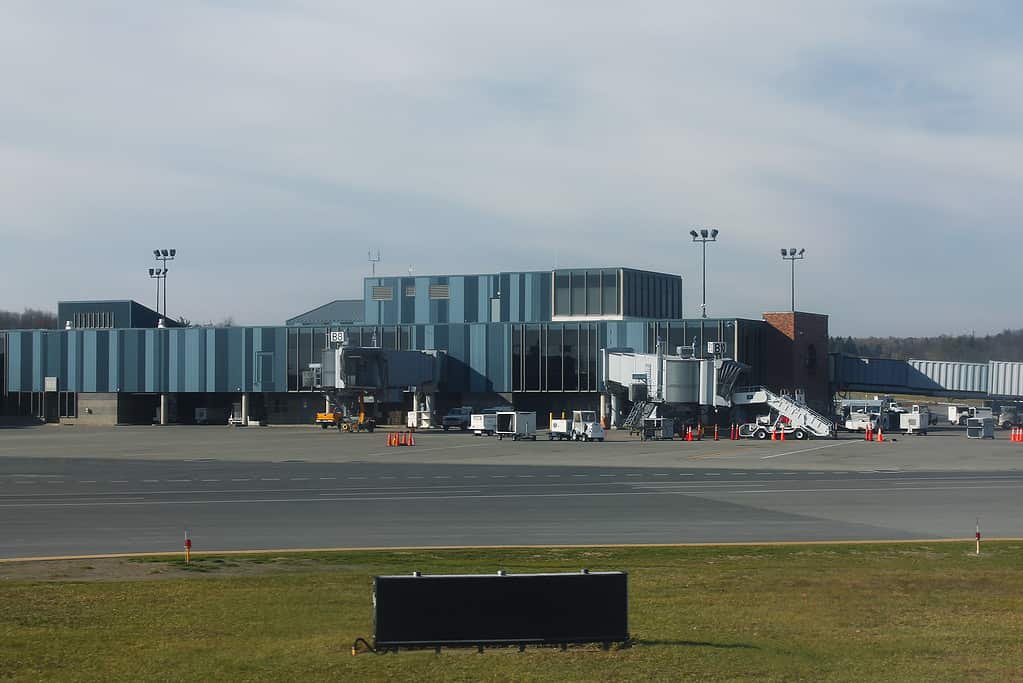
The airport’s first airmail flights took off in June 1928, and passenger flights followed four months later in October.
©formulaone / CC BY-SA 2.0 – License
Albany International Airport – Albany, New York (Established: 1928)
Albany International Airport is a publicly-owned airport in Albany County, NY, about 6 miles (9.7 km) northwest of Albany. This is the main airport for the Capital Region, Northeastern New York, and Western New England. The airport is on 1,000 acres (400 hectares) of land, and the Albany County Airport Authority operates the area. The airport handled 1,518,969 passengers in 2019, marking an increase of 3.6% compared to the previous year.
Albany International Airport is the base for State Police Aviation activities in the State of New York. The airport is a component unit of the County of Albany in the Town of Colonie, New York. Many airlines serve this airport, with Southwest Airlines having the most flights. The airport has added touchdown zone lighting to lower landing minimums, including a category two instrument landing system approach. This approach allows for a 3000-foot ceiling and 1.3 miles of visibility, making land in low-visibility weather conditions possible.
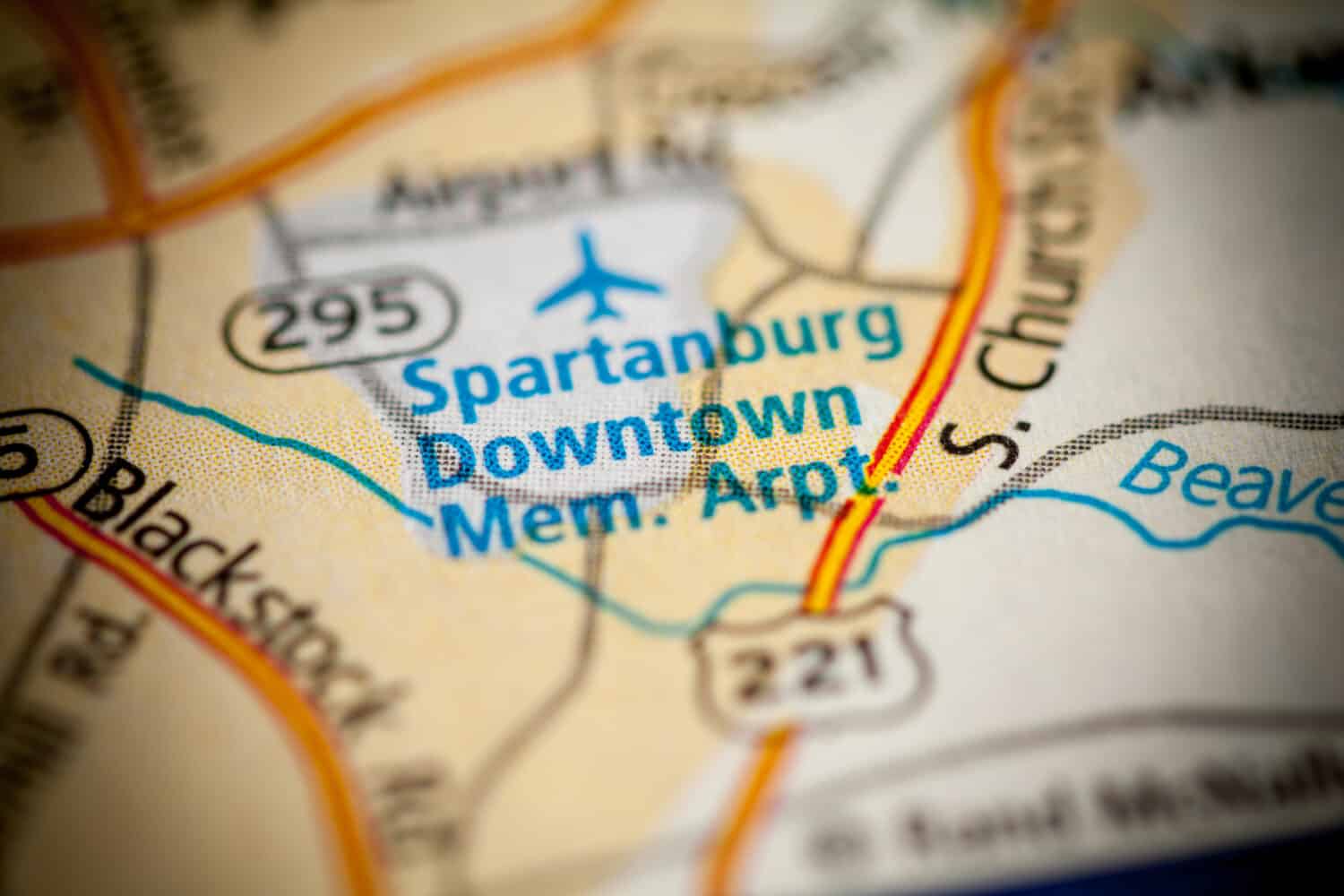
This airport was a training ground during World War II for US Army Air Corps.
©SevenMaps/Shutterstock.com
Spartanburg Downtown Memorial Airport – Spartanburg, South Carolina (Established: 1928)
The Spartanburg Downtown Memorial Airport is an airport for general aviation located southwest of Spartanburg, SC, on Ammons Road. The City of Spartanburg owns the airport and serves over 100 regional aircraft and 5,000 general aviation airports throughout the United States. Corporate jets belonging to some of Spartanburg’s most prominent companies also use this airport.
The airport was established in 1927, and Charles Lindbergh was present at the grand opening just a few months after his famous flight across the Atlantic. The passenger air service that started in the same year as something else was stopped in 1962 due to the operation of Greenville-Spartanburg International Airport (formerly known as the Greenville-Spartanburg Jetport). The airport served as a training ground for US Army Air Corps soldiers and a refueling hub for naval aviators during World War II. Currently, the airport has eight full-time employees and one part-time employee who oversees all limited fixed-based operators that offer flight instruction, aircraft rental and sales, and aircraft charter services.
Conclusion
Airports are critical as the entrance points that link us to the world. They are the historical landmarks that have observed the development of air travel since its inception to the present day.
Have had a significant impact on the progress of aviation. Some airports include where military aviation was born and large international hubs. They have all contributed to shaping the aviation industry.
Airports hold significant historical and cultural value beyond their utility as infrastructure, representing the hopes and goals of countless aviators, travelers, and dreamers. Every airport has a unique narrative that highlights its successes, difficulties, and outstanding accomplishments.
These airports have played a crucial role in aviation history by enabling significant advancements and fostering global connectivity. They have united communities, stimulated economic progress, and created opportunities for exploration and growth.
As we reflect on the history of these airports, we are reminded of the incredible progress made in aviation. From the early days of flight to the present, the spirit of adventure and the pursuit of the skies have remained constant.
The photo featured at the top of this post is © Celso Diniz/Shutterstock.com
Thank you for reading! Have some feedback for us? Contact the AZ Animals editorial team.






